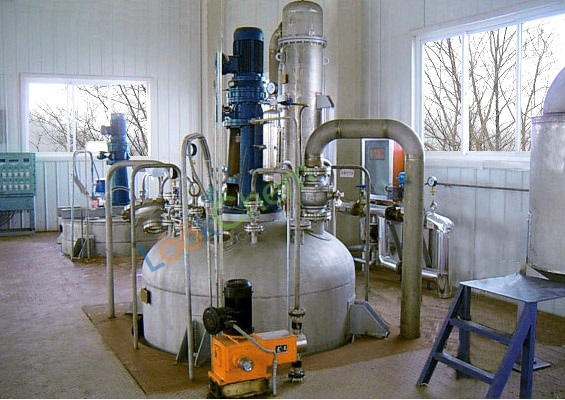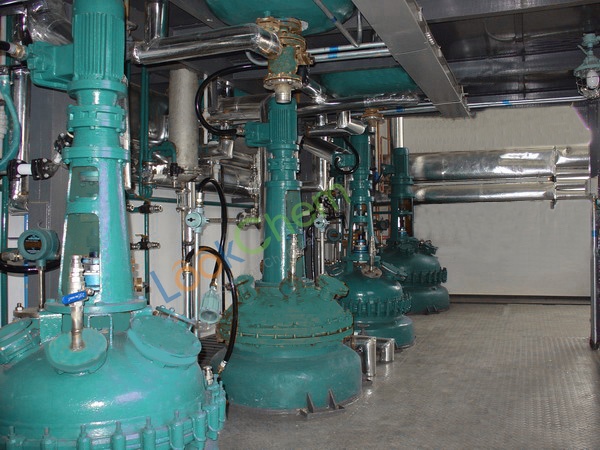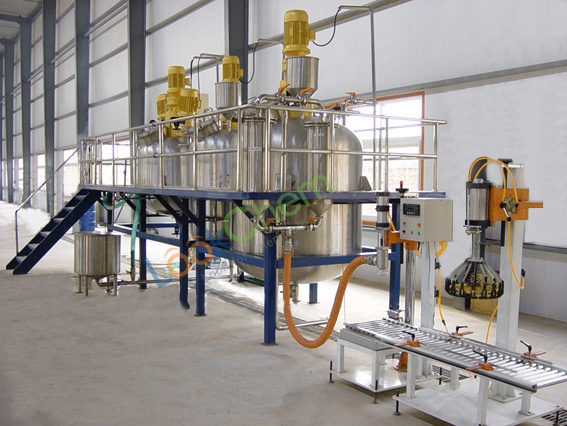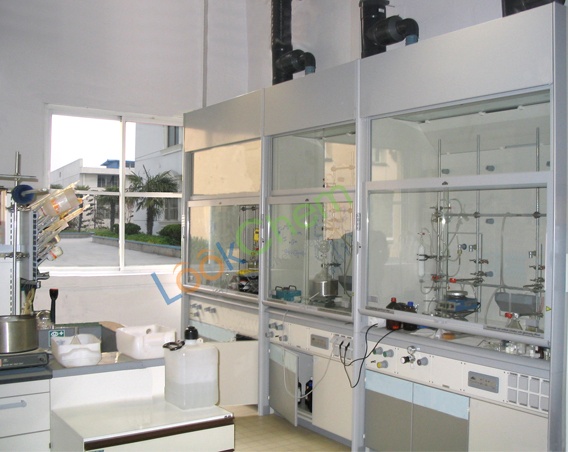Diphenyl(2 4 6-trimethylbenzoyl)phosphine oxide msds
- Product Details
- Company Profile
The following Diphenyl(2 4 6-trimethylbenzoyl)phosphine oxide MSDS detailed information are provided by Hangzhou Chemfar Ltd. This company has more than 20 years' experience in providing integrated development and manufacturing service to the pharmaceutical and fine chemical industry.
1. IDENTIFICATION OF THE SUBSTANCE/MIXTURE AND OF THE COMPANY/UNDERTAKING
Product name: Diphenyl(2,4,6-trimethylbenzoyl)phosphine oxide
2. HAZARDS IDENTIFICATION
Classification of the substance or mixture
Not a dangerous substance according to GHS.
This substance is not classified as dangerous according to Directive 67/548/EEC.
Label elements
The product does not need to be labelled in accordance with EC directives or respective national laws.
Other hazards - none
3. COMPOSITION/INFORMATION ON INGREDIENTS
Formula: C22H21O2P
Molecular Weight: 348,37 g/mol
4. FIRST AID MEASURES
If inhaled
If breathed in, move person into fresh air. If not breathing give artificial respiration
In case of skin contact
Wash off with soap and plenty of water.
In case of eye contact
Flush eyes with water as a precaution.
If swallowed
Never give anything by mouth to an unconscious person. Rinse mouth with water.
5. FIRE-FIGHTING MEASURES
Suitable extinguishing media
Use water spray, alcohol-resistant foam, dry chemical or carbon dioxide.
Special protective equipment for fire-fighters
Wear self contained breathing apparatus for fire fighting if necessary.
6. ACCIDENTAL RELEASE MEASURES
Personal precautions
Avoid dust formation.
Environmental precautions
Do not let product enter drains.
Methods and materials for containment and cleaning up
Sweep up and shovel. Keep in suitable, closed containers for disposal.
7. HANDLING AND STORAGE
Precautions for safe handling
Provide appropriate exhaust ventilation at places where dust is formed. Normal measures for preventive fire
protection.
Conditions for safe storage
Store in cool place. Keep container tightly closed in a dry and well-ventilated place.
8. EXPOSURE CONTROLS/PERSONAL PROTECTION
Personal protective equipment
Respiratory protection
Respiratory protection is not required. Where protection from nuisance levels of dusts are desired, use
type N95 (US) or type P1 (EN 143) dust masks. Use respirators and components tested and approved
under appropriate government standards such as NIOSH (US) or CEN (EU).
Hand protection
For prolonged or repeated contact use protective gloves.
Eye protection
Safety glasses
Hygiene measures
General industrial hygiene practice.
9. PHYSICAL AND CHEMICAL PROPERTIES
Appearance: Form
Safety data
pH
Melting point
Boiling point
Flash point
Ignition temperature
Lower explosion limit
Upper explosion limit
Water solubility
10. STABILITY AND REACTIVITY
Chemical stability
Stable under recommended storage conditions.
Conditions to avoid
no data available
Materials to avoid
Strong oxidizing agents
Hazardous decomposition products
Hazardous decomposition products formed under fire conditions. - Carbon oxides, Oxides of phosphorus
11. TOXICOLOGICAL INFORMATION
Acute toxicity
no data available
Skin corrosion/irritation
no data available
Serious eye damage/eye irritation
no data available
Respiratory or skin sensitization
no data available
Germ cell mutagenicity
no data available
Carcinogenicity
IARC: No component of this product present at levels greater than or equal to 0.1% is identified as
probable, possible or confirmed human carcinogen by IARC.
Reproductive toxicity
no data available
Specific target organ toxicity - single exposure
no data available
Specific target organ toxicity - repeated exposure
no data available
Aspiration hazard
no data available
Potential health effects
Inhalation
Ingestion
Skin
Eyes
May be harmful if inhaled. May cause respiratory tract irritation.
May be harmful if swallowed.
May be harmful if absorbed through skin. May cause skin irritation.
May cause eye irritation.
Signs and Symptoms of Exposure
To the best of our knowledge, the chemical, physical, and toxicological properties have not been thoroughly investigated.
Additional Information
RTECS: Not available
12. ECOLOGICAL INFORMATION
Toxicity
no data available
Persistence and degradability
no data available
Bioaccumulative potential
no data available
Mobility in soil
no data available
PBT and vPvB assessment
no data available
Other adverse effects
no data available
13. DISPOSAL CONSIDERATIONS
Product
Observe all federal, state, and local environmental regulations.
Contaminated packaging
Dispose of as unused product.
14. TRANSPORT INFORMATION
ADR/RID
Not dangerous goods
IMDG
Not dangerous goods
IATA
Not dangerous goods
15. REGULATORY INFORMATION
This safety datasheet complies with the requirements of Regulation (EC) No. 1907/2006.
Verified Supplier
Hangzhou Chemfar Ltd.
- Country:
 China (Mainland)
China (Mainland) - Year Established: 2002
- Business type: Other
- Integral:


Contact Details|Similar Products

Escrow ServiceMore
Secure Your Orders With escrow More Transparency,Less Uncertainty


 Add to inquiry cart
Add to inquiry cart









